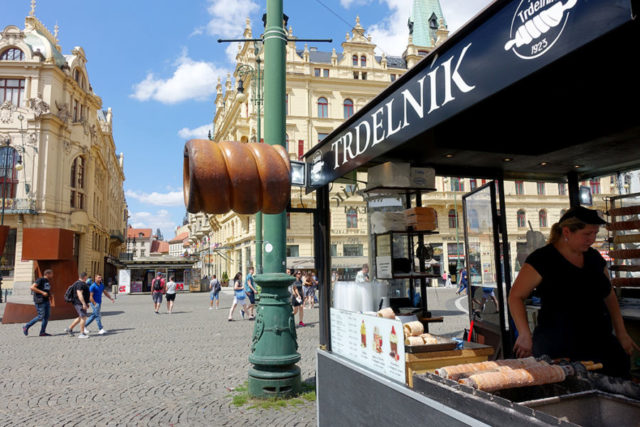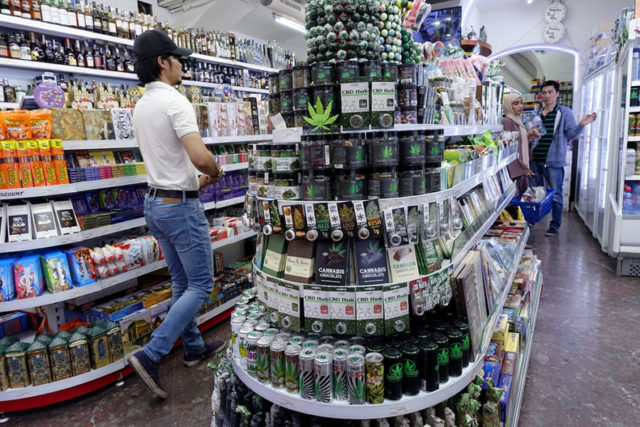I was just 19, visiting Romania for the first time. A new friend took me inside his home, to the hearth, and introduced me to what was left of his great-grandfather. It was a skull… dry, hollow, and easy to hold in one hand. He told me it was a tradition in the mountains of Transylvania for families to remember long-dead loved ones with this honored spot above the fireplace. I remember feeling a little bone envy.
Even though we’re not visiting Europe right now, I believe that travel dreaming can be good medicine. Last year, I published “For the Love of Europe” — a collection of my favorite stories from a lifetime of European travels — and this is just one of its 100 travel tales.

If you know where to look, you can find human bones on display in many corners of Europe. Later, on that same trip, I was in the Paris Catacombs. Deep under the city streets, I was all alone…surrounded by literally millions of bones — tibiae, fibulae, pelvises, and skulls, all stacked along miles of tunnels. I jumped at the opportunity to pick up what, once upon a time, was a human head. As what seemed like two centuries of dust tumbled off the skull, I looked at it…Hamlet-style. Just holding it was a thrill. I tried to get comfortable with it… to get to know it, in a way. I struggled with the temptation to stick it into my day bag. Imagine taking home a head dating back to Napoleonic times. What an incredible souvenir. But I just couldn’t do it. The next year, I returned to those same catacombs, pumped up and determined this time to steal me a skull. It was a different scene. Skulls within easy reach of visitors were now wired together, and signs warned that bags would be checked at the exit.
The Paris Catacombs show off the anonymous bones of six million permanent residents. In 1786, the French government decided to relieve congestion and improve sanitary conditions by emptying the city cemeteries, which had traditionally surrounded churches. They established an official ossuary in an abandoned limestone quarry. With miles of underground tunnels, it was the perfect location. For decades, the priests of Paris led ceremonial processions of black-veiled, bone-laden carts into the quarries, where the bones were stacked into piles five feet high and up to 80 feet deep, behind neat walls of skull-studded tibiae. Each transfer was completed with the placement of a plaque indicating the church and district from which that stack of bones came and the date they arrived.
Today, you can descend a long spiral staircase into this bony underworld (ignoring the sign that announces: “Halt, this is the empire of the dead”) and follow a one-mile subterranean public walk. Along the way, plaques encourage you to reflect upon your destiny: “Happy is he who is forever faced with the hour of his death and prepares himself for the end every day.” Emerging far from where you entered with white limestone-covered toes is a dead giveaway you’ve been underground, gawking at bones.
While I eventually outgrew my desire to steal a skull, in later years, as a tour guide, I’ve discovered I’m not the only one intrigued by human bones. If bones are on your bucket list, you’ve got plenty of options. Throughout Europe, Capuchin monks offer a different bone-venture. The Capuchins made a habit of hanging their dead brothers up to dry and then opening their skeleton-filled crypts to the public. Their mission: to remind us that in a relatively short period of time, we’ll be dead, too — so give some thought to mortality and how we might be spending eternity.
In the Capuchin Crypt in Rome, the bones of 4,000 monks who died between 1528 and 1870 are lined up for the delight — or disgust — of always wide-eyed visitors. A plaque shares their monastic message: “We were what you are…you will become what we are now.”
The Capuchins of Palermo, Sicily, offer an experience skull and shoulders above the rest. Their crypt is a subterranean gallery filled with 8,000 “bodies without souls,” howling silently at their mortality. For centuries, people would thoughtfully choose their niche before they died, and even linger there, getting to know their macabre neighborhood. After death, dressed in their Sunday best, their body (sans soul) would be hung up to dry.
In Kutná Hora, in the Czech Republic, monks take bone decor to an unrivaled extreme. Their ossuary is decorated with the bones of 40,000 people, many of them plague victims. The monks who stacked these bones 400 years ago wanted viewers to remember that the earthly church is a community of both the living and the dead. Later bone-stackers were more into design than theology — creating, for instance, a chandelier made with every bone in the human body.
In Europe, seekers of the macabre can get their fill of human skeletons. And in doing so, they learn that many of these bones — even long after death — still have something to say.
This story appears in my newest book, “For the Love of Europe” — a collection of 100 of my favorite memories from a lifetime of European travel. Please support local businesses in your community by picking up a copy from your favorite bookstore, or you can find it at my online Travel Store.
Stay tuned, travel buddies. Upcoming posts will be sure to carbonate your daily routine — such as a European-festivals bonanza — with running bulls, Euro-Mardi Gras, a crazy horse race, and huge tents filled with dirndls, lederhosen, and giant beers — at our next Monday Night Travel event. So, be sure to stick around, and invite your friends to join us here as well!






